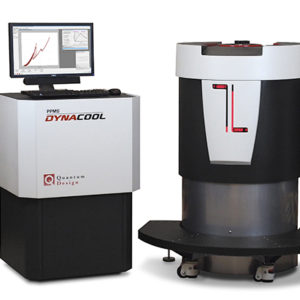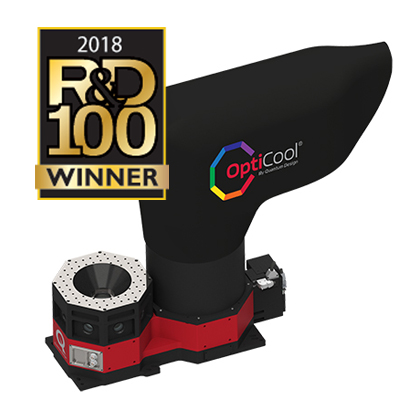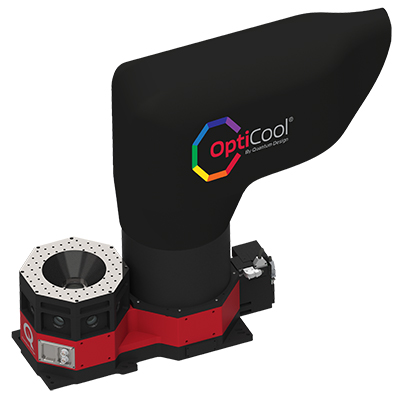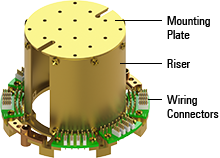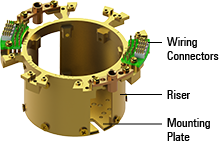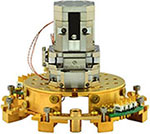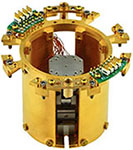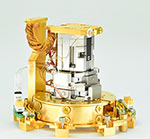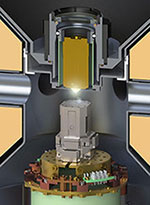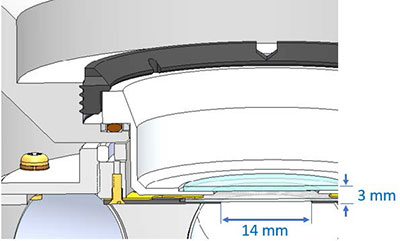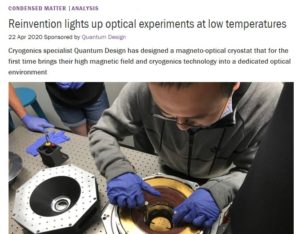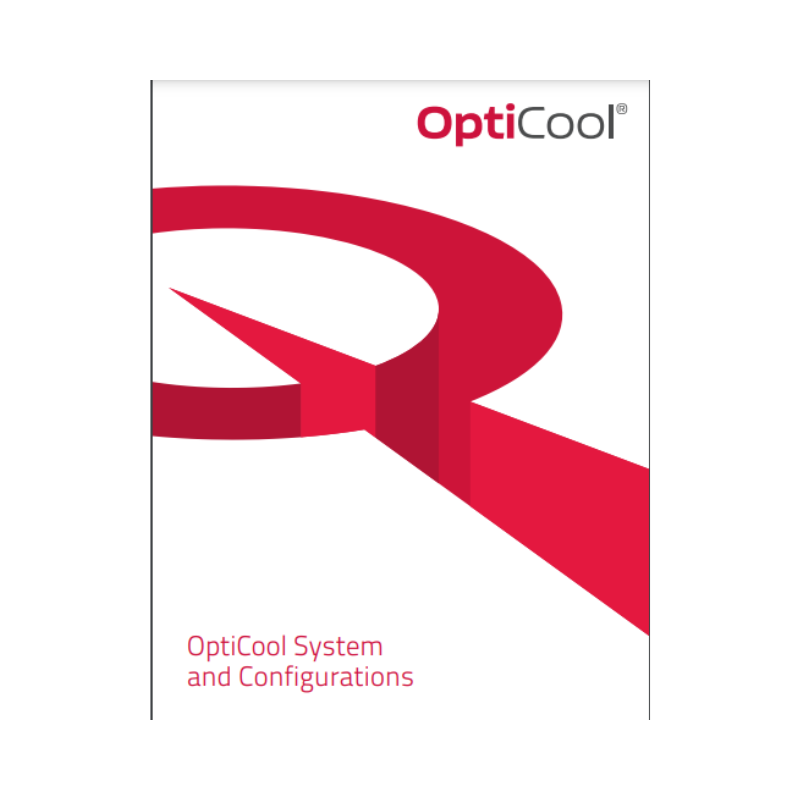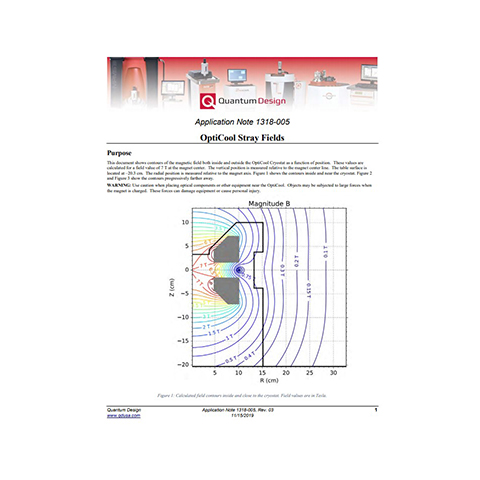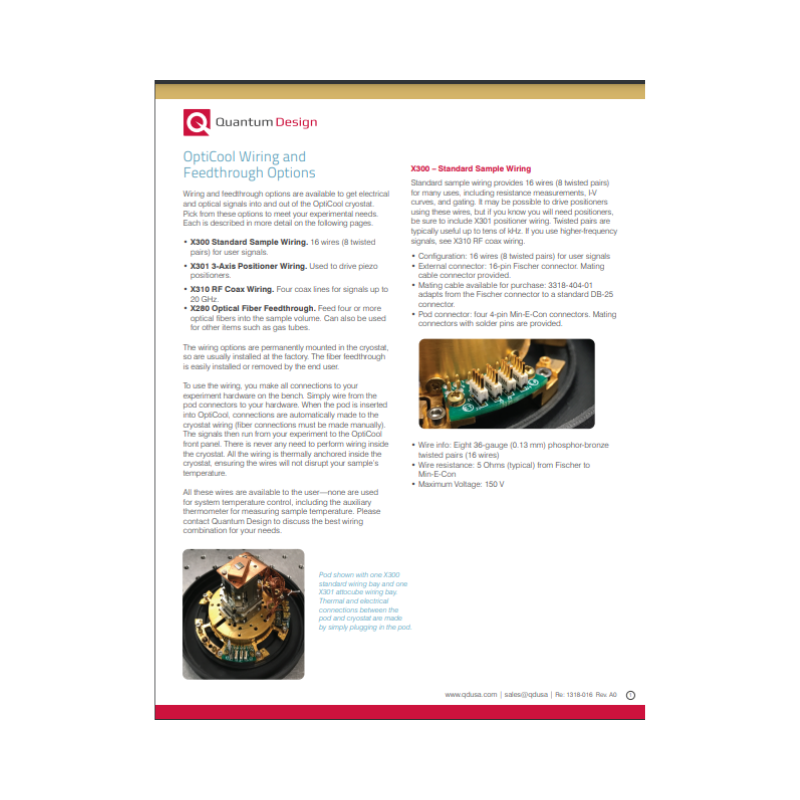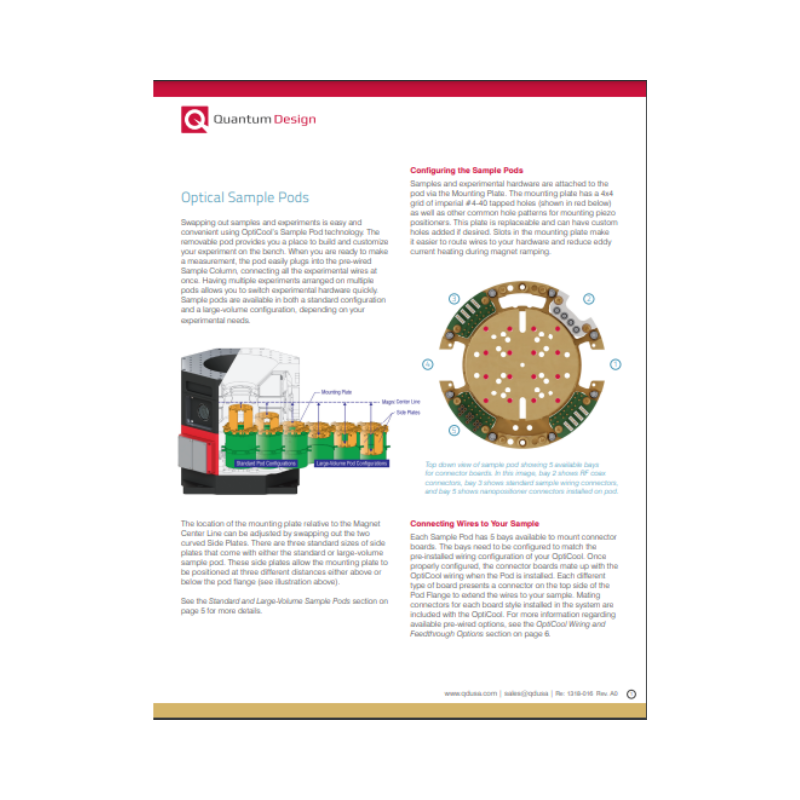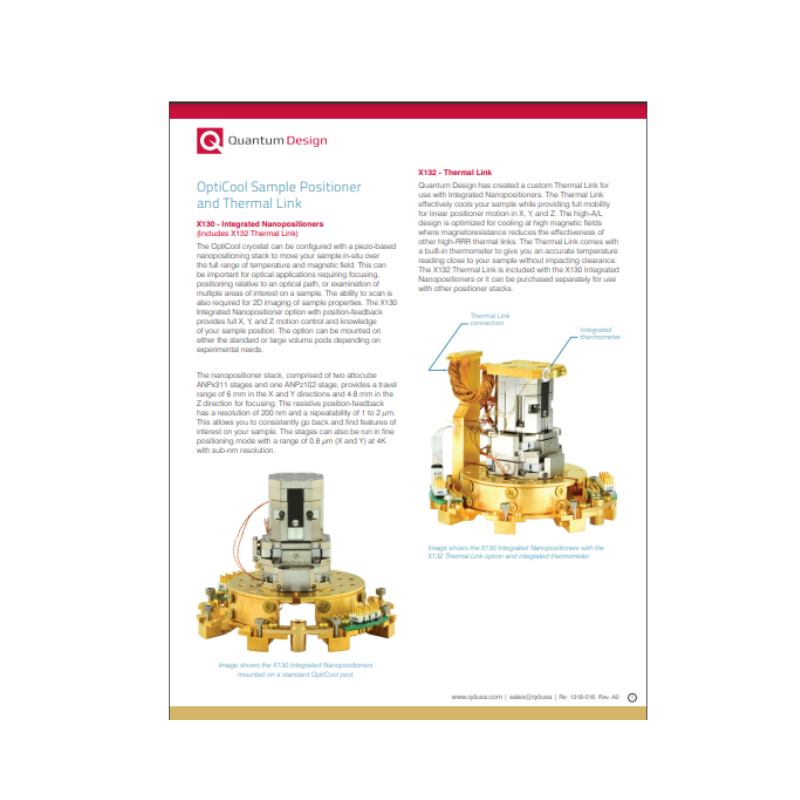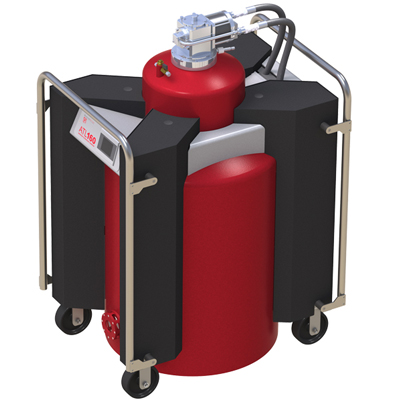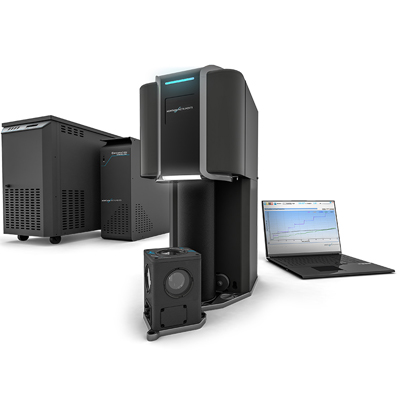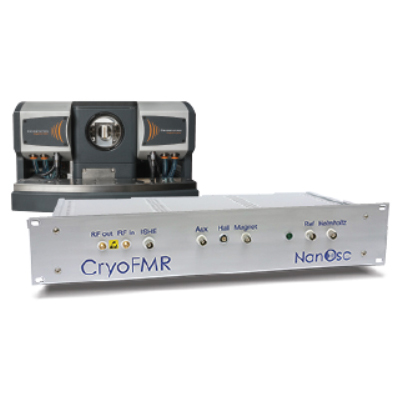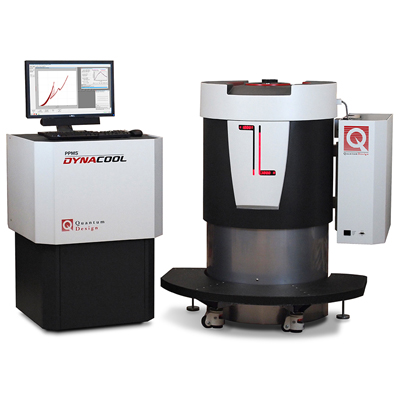- Features
- Options
- Specifications
- Videos
- Downloads
- Related Products
- Contact
- Back To Spectroscopy
- Back To Optics
- Back To Hyperspectral
- Back To Cameras
- Back To X-Ray
- Back To Light Measurement
- Back To Characterisation
- Back To Electron Microscopy
- Back To Magnetometry
- Back To Ellipsometers
- Back To Cryogenics
- Back To Lake Shore
Quantum Design OptiCool® Optical Cryostat
7 Tesla Magneto Optical Cryostat
The OptiCool by Quantum Design is a new magneto-optical cryostat using an innovative design that puts the sample volume in the heart of your optical environment. A custom 3.8 inch bore, split-coil, conical magnet offers fields perpendicular to the optical table up to ±7 tesla. The highly integrated design means, even with a magnet, your sample isn’t buried inside a large cryostat, far away from the optics. Seven side optical ports and one top optical port allow for optical access to your sample from a wide array of directions.
The OptiCool optical cryostat is a cryogen-free system with automated software to control temperature and magnetic field. At the push of a button you can change your sample temperature from 1.7 K to 350 K, with or without an applied magnetic field. A generous 89 mm diameter by 84 mm tall sample volume provides exciting possibilities in experiment design.
Possible applications for the OptiCool environment
- MOKE / CryoMOKE
- Raman / FTIR Spectroscopy
- Photoluminescence
- UV / VIS Reflectivity & Absorption
- AFM / Microscopy
- NV / Colour Defect / Vacancy Centres
- Nanomagnetism
- Time Resolved Magnetic Spectroscopy
- Quantum Optics
- Spintronics
FEATURES
- 8 Optical Access Ports: 7 Side Ports (NA > 0.11) – 1 Top Port (NA > 0.7)
- Temperature Range: 1.7 K to 350 K
- 7 T Split-Coil Conical Magnet
- Low Vibration: <10 nm peak-to-peak
- 89 mm x 84 mm Sample Volume
- Automated Temperature & Magnet Control
- Cryogen Free
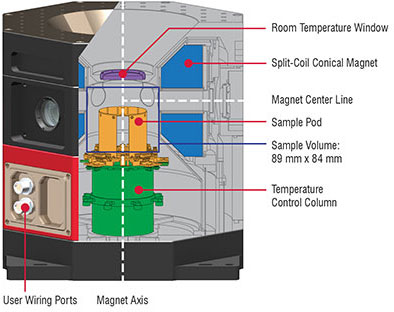

Testimonials
“Integrating the OptiCool® into my research program will allow for accessing experimental phase space in complex materials that simply wasn’t available to my group in the past. Innovative products advance science and the OptiCool certainly meets this standard.”
Prof. Richard Averitt of the Physics Department at the University of California San Diego
“A lot of my research over the years has been in the far infrared or terahertz. And so I think that the OptiCool® provides a really exciting opportunity to do novel far infrared spectroscopy on materials in a magnetic field environment.”
Prof. Richard Averitt, UC San Diego




